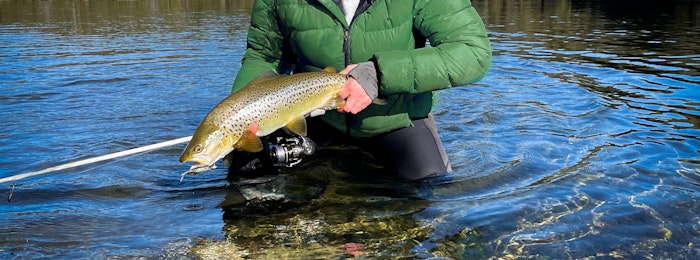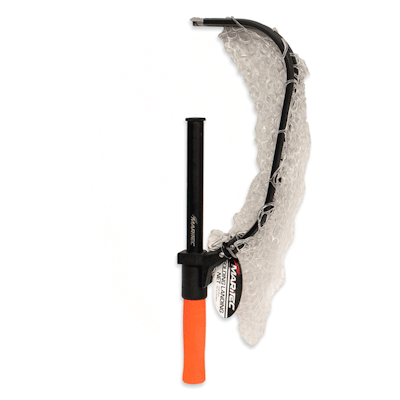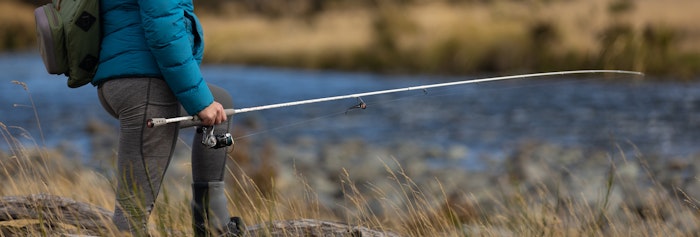Secrets to Trout Fishing in Australia Using Lures
Trout fishing in Australia is a thrilling pursuit that draws anglers to the pristine waters of its rivers and lakes. Whether you're a seasoned angler or a novice looking to hook your first trout, this comprehensive guide will equip you with the skills and knowledge needed for a successful fishing expedition. Read on to discover the best techniques and tackle to maximize your chances of landing that prized Australian trout.

What are Trout?
Trout are a group of fish belonging to the Salmonidae family, with several species introduced into Australian waters from the northern hemisphere. The most common species include Rainbow Trout (Oncorhynchus mykiss) and Brown Trout (Salmo trutta). Both are a prized catch for anglers. In Australia, trout are predominantly found in cooler waters of the southern states. Prime trout fishing locations can be found in Victoria, Tasmania, and the Snowy Mountains in New South Wales and parts of Western Australia. Research local regulations and obtain the necessary permits before embarking on your fishing adventure. Popular spots include the Eucumbene River, Lake Jindabyne, and the famous Great Lake in Tasmania.
Trout can live for more than 10 years, but most caught by anglers are between 3 and 5 years old and range from 400 grams to 2 kilograms.

Tricky Trout Behaviour
Trout are known for their agility and can often be seen leaping out of the water. Often spotting a trout is a far more subtle affair; a tiny dimple on the water surface, a shadow on the stream bed that moved or even something that may just be a rock. They are predatory fish and hence can be willing lure takers. Trout primarily feed on aquatic insects, small fish, and crustaceans. They are a highly sensitive fish and in areas that receive moderate to high fishing pressure must be approached with stealth to avoid spooking them. Trout are generally more active during dawn and dusk, though they can be caught throughout the day. Trout prefer cooler waters, typically between 10°C and 16°C. A falling barometer often signals ideal fishing conditions, as trout tend to feed more aggressively during these times. Spring and autumn are the best seasons for trout fishing in Australia.

Spin Rods for Trout Fishing
A medium-light to medium spin rod and reel is ideal for trout fishing around lake shores, rivers and streams. Lengths up to 7’6” are ideal for casting around lakes where sometimes you want greater distance from a heavier lure like a Tassie Devil or Baltic Minnow. Shorter rods are best suited to light stream work where a long rod is more of a hinderance. The Daiwa Presso range is specifically designed for small streams where conditions can get very tight. 5’6” and 6’ ultra light 1-4kg rods casting light lures will make short work of short accurate casts. Baitcaster outfits are generally reserved for trolling lures from a boat. If you only want to buy one outfit to cover both, we recommend staying with spin.
Reels in the 1000 to 2500 size for spinning will be sufficient as you will not need hundreds of metres of line. The exception to this may be downrigging from a boat in very deep water.
4-6 pound test monofilament or fluorocarbon is sufficient strength of a leader for most trout fishing scenarios. You may wish to step it up to 8 pound in water that is a bit turbid, has many snags or is known to contain trophy fish.
Leader lengths of 2-4 feet is generally enough, however in especially in clear water conditions extending the leader to 8-10 feet. This will help prevent spooking wary fish.

Bait for Trout Fishing
While this guide focuses on trout fishing with lures, live baits like worms, minnows, and insect larvae can also be very effective. Each state in Australia has specific regulations regarding the size and possession limits for trout. Closed seasons are also in effect in some regions, primarily to protect the species during their spawning period.
Visit the Department of Primary Industry site for the state in which you are fishing to check on the rules and regulations.
Recommended Lures for Trout
Spinners and spoons are highly effective and can be cast far and accurately. Smaller profile lures are generally preferred, as they closely resemble the size of natural trout prey. Depending on the water conditions and trout size, soft plastics lures with jig heads ranging from 1/8 to 1/2 ounce are suitable. The speed at which you retrieve your lure can make a huge difference. Start with a moderate pace and adjust based on the trout's response. Add some pauses if you are using a bibbed minnow or lightly weighted soft plastic. This pause can mimic the behaviour of real prey taking a rest, often triggering a strike from a following trout.
A faster retrieve can trigger aggressive strikes. Don’t keep casting the same lure to a fish that you can see or a piece of water that you believe must hold fish. Chances are that the fish has seen your offering and rejected it. Continued casting of that lure may well spook the fish and stop him feeding until you leave the area. Instead, take the time to change your lure and give the fish a moment to settle. Using a quick lure change clip is a great idea. It will make changing lures easier while keeping your leader intact. Let’s face it, we can all be lazy sometimes!
Vary the depth at which you present your lure. Some trout may feed close to the surface, while others prefer mid-depths or the bottom. Experimenting with different depths helps in locating the trout and understanding their feeding patterns.
Top Lures:

Rebel Teeny Wee Crawfish
Tasmanian Devil
Silver Spoon
Nils Master Bingo
Daiwa Double Clutch 60mm
Berkley Power Minnow 3"
Follow the Contours
When fishing in rivers or streams, let your lure follow the natural contours of the bottom. This technique is particularly effective in areas with varying depths and structures, such as rocks or fallen trees, where trout often lie in wait for prey. In flowing waters, use the current to your advantage. Cast upstream and let your lure drift down naturally with the current, retrieving it slowly. This mimics the movement of insects or small fish being carried by the water flow.

Landing Trout
Use a net to land the trout gently. Trout can jump, kick and change direction with tremendous force to evade capture. Lifting a fish out of the water by the leader is an almost sure-fire way to lose a fish, often your lure too. A folding net is a huge advantage to the land based trout angler. It remains small and unobtrusive while walking and some will fit nicely in your backpack. One tip though is to unpack and unfold it ready to use before casting!

Are Trout Good Eating Fish?
Yes, trout are highly regarded for their delicate flavour and texture. They are a popular choice among anglers and gourmets alike.

In conclusion, trout fishing in Australia with lures offers an exciting and rewarding experience. Understanding trout behaviour, habitat, and the right gear can significantly increase your success rate. Remember to respect local regulations and practice catch-and-release when appropriate to help conserve these magnificent fish for future generations.

Happy fishing!














